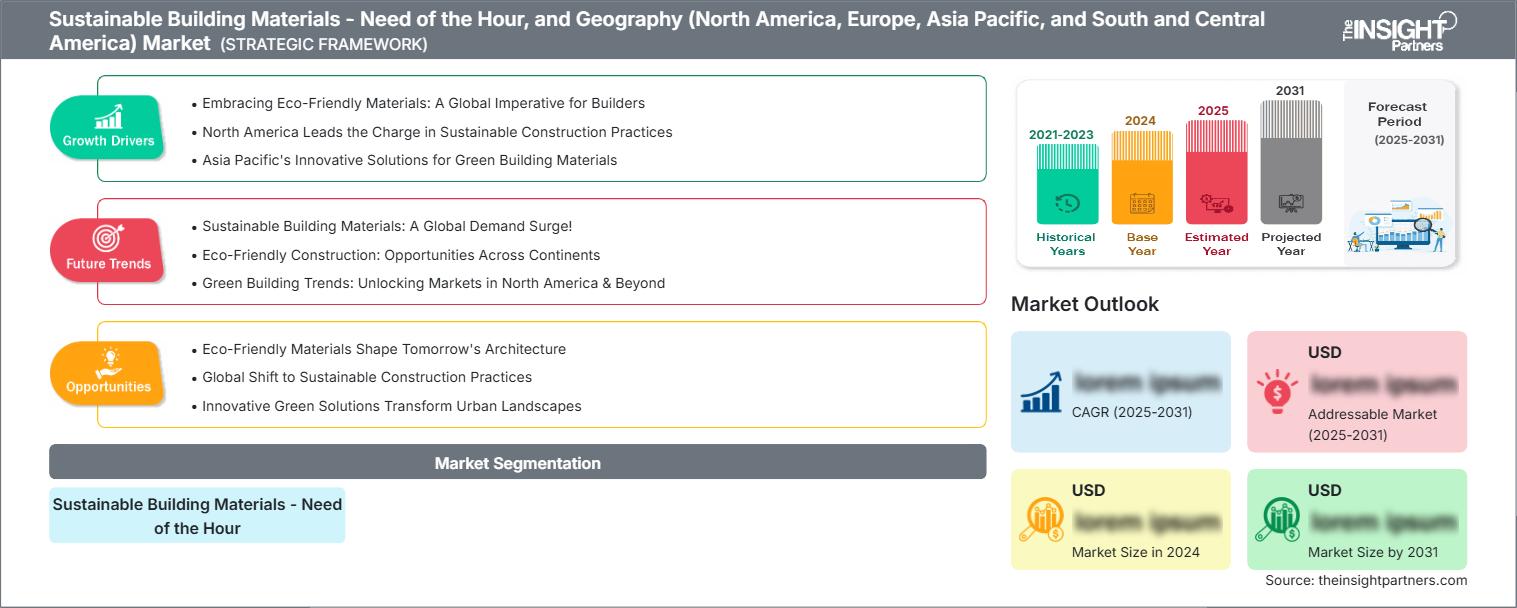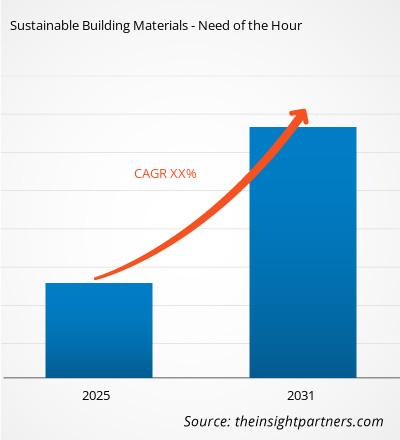La construcción es el principal contribuyente al desarrollo socioeconómico en la mayoría de los países y representa la mayor parte del consumo energético. La construcción genera importantes emisiones de gases de efecto invernadero, lo que impulsa la adopción de métodos de construcción más sostenibles. Por ello, los materiales de construcción sostenibles han cobrado importancia en la industria global de la construcción. Los materiales de construcción sostenibles, también conocidos como materiales de construcción ecológicos, son energéticamente eficientes y duraderos. Los materiales de construcción sostenibles ayudan a proporcionar condiciones ambientales cómodas y saludables durante todo el ciclo de vida del edificio. El objetivo principal de los materiales de construcción sostenibles es lograr un uso eficiente de la energía, el agua y las materias primas, minimizando el impacto ambiental de los edificios. Sin embargo, debido a la complejidad de la implementación de la sostenibilidad y a la fragmentación de la industria, su implementación aún se encuentra en una etapa incipiente.
Obtendrá personalización en cualquier informe, sin cargo, incluidas partes de este informe o análisis a nivel de país, paquete de datos de Excel, así como también grandes ofertas y descuentos para empresas emergentes y universidades.
Materiales de construcción sostenibles: la necesidad del momento y la geografía (América del Norte, Europa, Asia Pacífico, América del Sur y América Central) Mercado: Perspectivas estratégicas

-
Obtenga las principales tendencias clave del mercado de este informe.Esta muestra GRATUITA incluirá análisis de datos, desde tendencias del mercado hasta estimaciones y pronósticos.
Se anticipa que la creciente demanda de ciudades e infraestructuras sostenibles debido a la evolución del sector de la construcción impulsará el mercado de materiales de construcción sostenibles. Las grandes empresas constructoras apuntan a entregar edificios sostenibles certificados a un costo financiero y ambiental reducido. En los EE. UU., el Liderazgo en Energía y Diseño Ambiental ( LEED ) del Green Building Council ha introducido una nueva forma para los materiales y productos de construcción que amplían su papel en el proceso de certificación desde el punto de fabricación hasta el final de la vida útil del edificio. Debido a la llegada de la digitalización y la automatización en la mayoría de las industrias, la industria de la construcción puede transformarse integrando tecnología digital y automatización avanzada en edificios e infraestructuras. Con un 30-40% de residuos sólidos generados por el entorno construido, los materiales de construcción sostenibles brindan una oportunidad significativa a la industria de la construcción para reducir costos, conservar recursos y proteger el medio ambiente.
Los principales materiales utilizados como materiales de construcción sostenibles incluyen aislamiento térmico verde, metal reciclado, madera recuperada, bambú, hormigón celular aislante, vidrio reciclado, etc. Estos son materiales ecológicos y tienen un bajo impacto ambiental durante la producción, implementación y mantenimiento. En su mayoría son materiales reciclables y de origen local. Las empresas buscan edificios con cero emisiones de carbono y optimizar el rendimiento del ciclo de construcción mediante el uso de estos materiales sostenibles. Cada vez se introducen más materiales ecológicos en el mercado, lo que reduce significativamente el coste energético en la construcción residencial y comercial.
Materiales de construcción sostenibles: necesidad del momento y geografía (América del Norte, Europa, Asia Pacífico, América del Sur y América Central) Perspectivas regionales del mercado
Los analistas de The Insight Partners han explicado detalladamente las tendencias y los factores regionales que influyen en el mercado de materiales de construcción sostenibles (Necesidad del momento) y su geografía (Norteamérica, Europa, Asia Pacífico, Sudamérica y Centroamérica) durante el período de pronóstico. Esta sección también analiza los segmentos de mercado y la geografía de materiales de construcción sostenibles (Necesidad del momento) en Norteamérica, Europa, Asia Pacífico, Oriente Medio y África, y Sudamérica y Centroamérica.
Materiales de construcción sostenibles: necesidad del momento y geografía (América del Norte, Europa, Asia Pacífico, América del Sur y América Central) Alcance del informe de mercado
| Atributo del informe | Detalles |
|---|---|
| Tamaño del mercado en 2024 | US$ XX millones |
| Tamaño del mercado en 2031 | US$ XX millones |
| CAGR global (2025-2031) | XX% |
| Datos históricos | 2021-2023 |
| Período de pronóstico | 2025-2031 |
| Segmentos cubiertos | Por Materiales de Construcción Sostenibles - Necesidad del Momento |
| Regiones y países cubiertos |
América del norte
|
| Líderes del mercado y perfiles de empresas clave |
|
Materiales de construcción sostenibles: la necesidad del momento y la geografía (América del Norte, Europa, Asia Pacífico, América del Sur y América Central)Densidad de los actores del mercado: comprensión de su impacto en la dinámica empresarial
El mercado de materiales de construcción sostenibles: necesidad actual y geografía (Norteamérica, Europa, Asia Pacífico, Sudamérica y Centroamérica) está creciendo rápidamente, impulsado por la creciente demanda del usuario final debido a factores como la evolución de las preferencias de los consumidores, los avances tecnológicos y un mayor conocimiento de los beneficios del producto. A medida que aumenta la demanda, las empresas amplían su oferta, innovan para satisfacer las necesidades de los consumidores y aprovechan las tendencias emergentes, lo que impulsa aún más el crecimiento del mercado.

- Obtenga información sobre los principales actores del mercado de materiales de construcción sostenibles: la necesidad del momento y la geografía (América del Norte, Europa, Asia Pacífico, América del Sur y Central).
Norteamérica y Europa son grandes usuarios de materiales de construcción ecológicos o sostenibles. Más de la mitad de las constructoras han implementado la construcción ecológica en sus proyectos. Sin embargo, países en desarrollo como India carecen de incentivos para la construcción sostenible. Lenta pero sostenidamente, los consumidores se están moviendo hacia hogares ecológicos, lo que ayuda a promover materiales de construcción sostenibles. En India, el Código de Construcción Ecológica ha establecido códigos y estándares en las ordenanzas estatales y normas establecidas por los programas de calificación, como LEED-India, el Consejo Indio de Construcción Ecológica (IGBC), TERI-GRIHA y otras certificaciones similares. Es importante que la implementación de estas políticas sea efectiva y que los constructores comerciales obtengan beneficios fiscales y permisos rápidos en forma de incentivos.
El impacto de la construcción dura décadas y afecta tanto a la generación actual como a la futura; por lo tanto, es la necesidad del momento de adoptar materiales de construcción sostenibles que tengan un impacto positivo en el medio ambiente durante la construcción y después del ciclo de vida del edificio.
- Análisis histórico (2 años), año base, pronóstico (7 años) con CAGR
- Análisis PEST y FODA
- Tamaño del mercado, valor/volumen: global, regional y nacional
- Industria y panorama competitivo
- Conjunto de datos de Excel
Informes recientes
Testimonios
Razón para comprar
- Toma de decisiones informada
- Comprensión de la dinámica del mercado
- Análisis competitivo
- Información sobre clientes
- Pronósticos del mercado
- Mitigación de riesgos
- Planificación estratégica
- Justificación de la inversión
- Identificación de mercados emergentes
- Mejora de las estrategias de marketing
- Impulso de la eficiencia operativa
- Alineación con las tendencias regulatorias






















 Obtenga una muestra gratuita para - Materiales de construcción sostenibles: necesidad del momento y geografía (América del Norte, Europa, Asia Pacífico, América del Sur y América Central)
Obtenga una muestra gratuita para - Materiales de construcción sostenibles: necesidad del momento y geografía (América del Norte, Europa, Asia Pacífico, América del Sur y América Central)